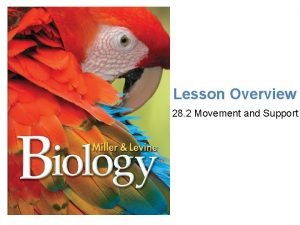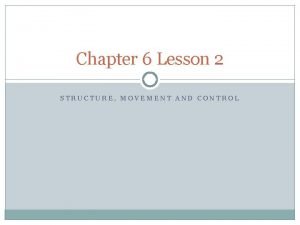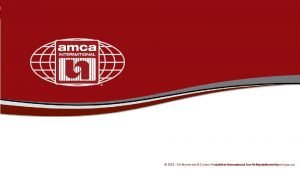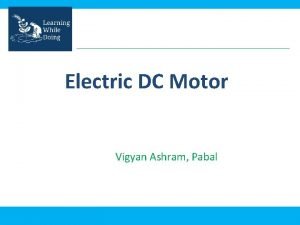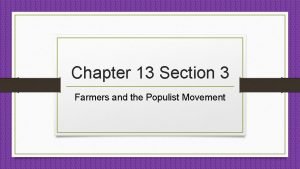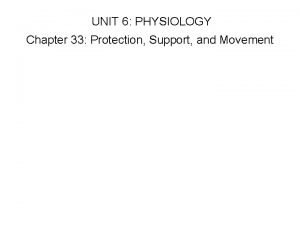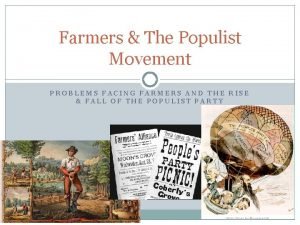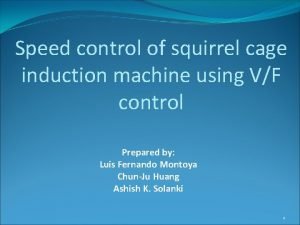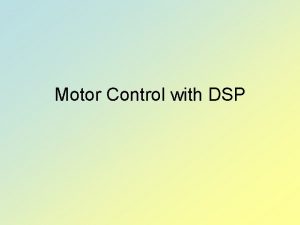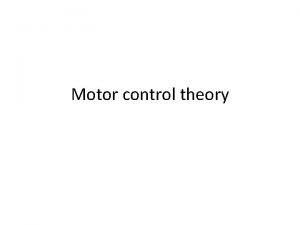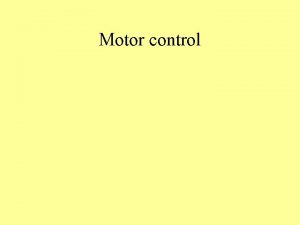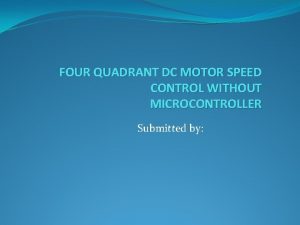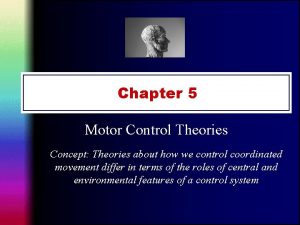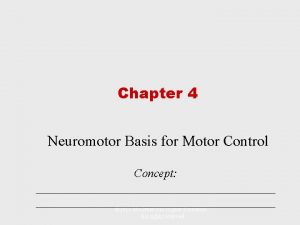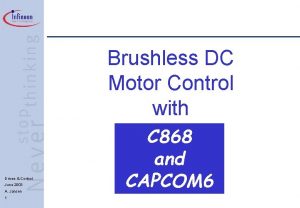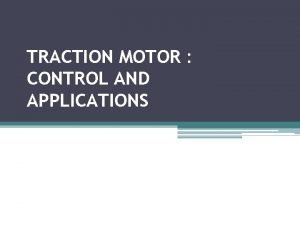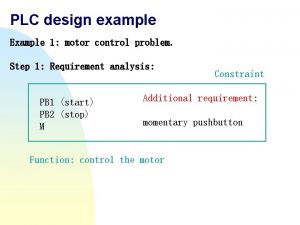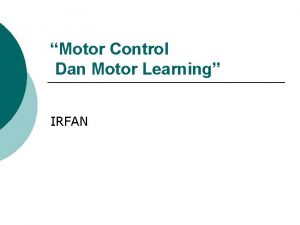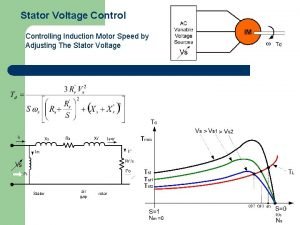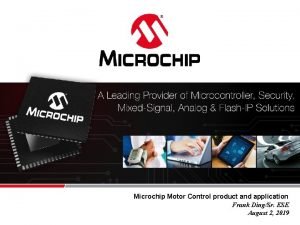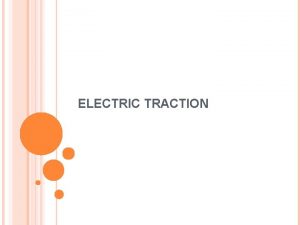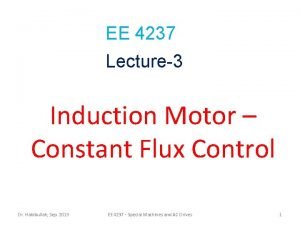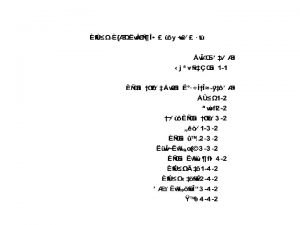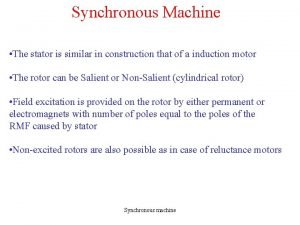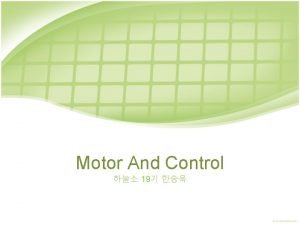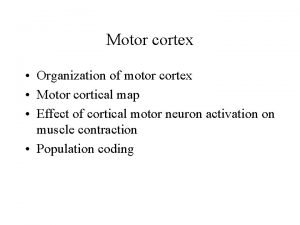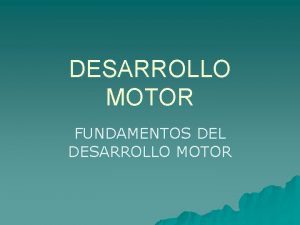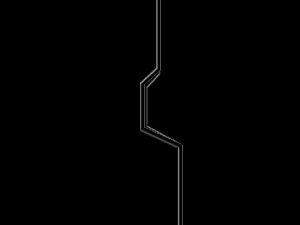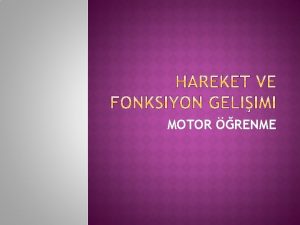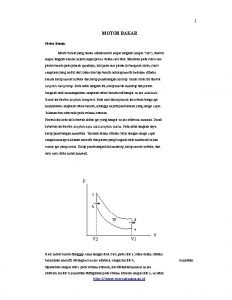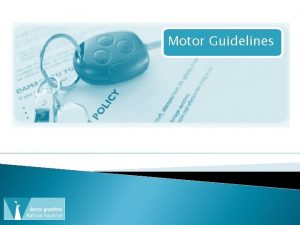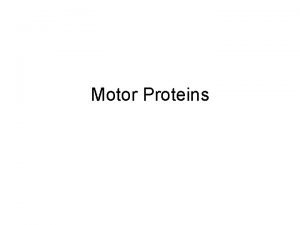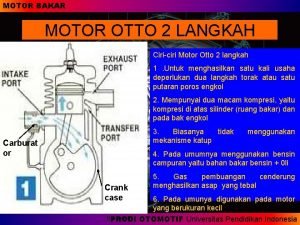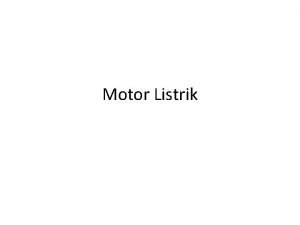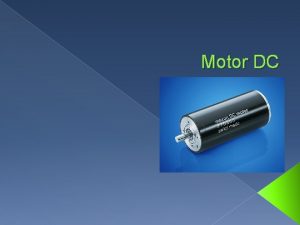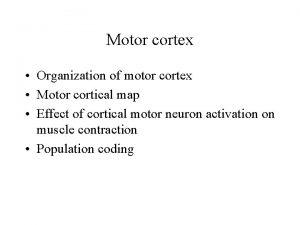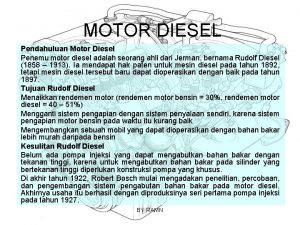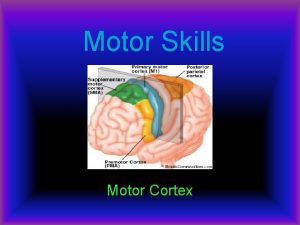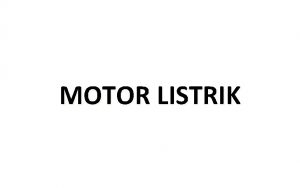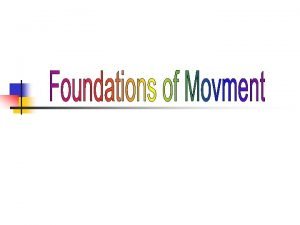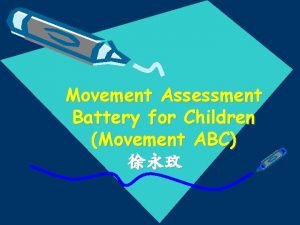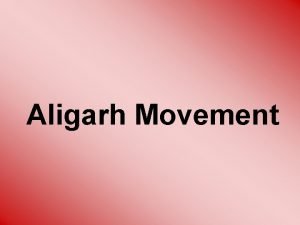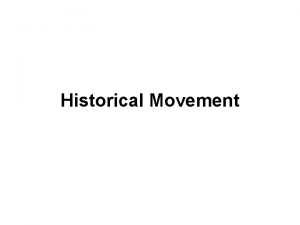Chapter 7 Motor Control and Movement Motor control































- Slides: 31

Chapter 7 Motor Control and Movement

Motor control ¡ ¡ ¡ Functional segregation l Different areas control different aspects of movement Hierarchical organization l Higher levels concerned with global tasks l Lower level tasks are carried ou by the lower levels of the hierarchy Four levels l the spinal cord l the brain stem l the motor cortex l the association cortex

Types of muscle ¡ Cardiac muscle l Heart l Circulates blood, maintains blood pressure

Types of muscle ¡ Smooth muscle l Encircles blood vessels l Walls of digestive, respiratory, urinary organs l Moves food/urine products and controls blood flow

Types of muscle ¡ Skeletal or striated muscle l Attached to bones by tendons l Moves or stabilizes movement

The anatomy of a muscle ¡ ¡ Muscle fibres l Myofibrils (10 -100 microns in diameter) l Myofilaments (myosin and actin) Sarcomeres – functional units l Bands of myofilaments that overlap

Neural control of muscle contraction ¡ ¡ ¡ Alpha motor neurons – large axons Extrafusal muscle fibre – predominant fibres in skeletal muscles Motor end plate – point of innervation of extrafusal fibres Motor unit – muscle fibres and motor neuron Motor unit pool – groups of motor units Neuromuscular Junction – axon terminal of a motor neuron with the muscle

Tendon organs ¡ ¡ ¡ Receptors located in the tendons Detect excessive force and inhibit contraction Prevent injury to tendon or muscle

Muscle spindles ¡ ¡ ¡ Mechanoreceptors that are located inside extrafusal muscle fibres Dynamic and static changes in muscle length Stretching of the intrafusal muscle, triggering the annulospiral nerve endings to fire more rapidly

Monosynaptic stretch reflexes ¡ ¡ ¡ Single synapse between the sensory receptor and the muscle effectors Knee Jerk is one example Stretch reflex also plays a major role in posture

Polysynaptic stretch reflex ¡ ¡ ¡ Withdrawal reflex Receptor transmits signal to spinal cord and synapses on interneuron Interneurons may excite and/or inhibit to achieve a withdrawal reflex

Renshaw cells ¡ ¡ ¡ Every alpha motor neuron has a contralateral branch in the spinal cord that synapses with a Renshaw cell Prevent muscle damage as a result of fatigue Fires at the rate of the alpha neuron When threshold is reached, the alpha motor neuron will stop firing Negative feedback loop

Gamma motor system ¡ ¡ ¡ Small motor neurons originating in the spinal cord Innervate the distal ends of the extrafusal fibres Contraction activates the stretch reflex Resulting is increased muscle tone Except when we are experiencing REM sleep

Cortical control of movement ¡ ¡ Right hemisphere of the brain controls the left side of the body and the left hemisphere controls the right side Primary motor cortex l Precentral gyrus l Control of voluntary movements l Layer V (large pyramidal cell layer) most distinct

Cortical control of movement ¡ Primary motor cortex – each part of the body has its own representation in the primary motor cortex, which is arranged somatotopically

Motor cortex – secondary ¡ ¡ ¡ Consists of the premotor cortex and the supplementary motor area (SMA) Receives input from dorsal lateral prefrontal cortex and are involved with the preparation and the sequencing of voluntary movements Premotor cortex – mirror neurons

Posterior parietal cortex ¡ ¡ Consolidates visual, auditory and skin sense information Transmits it to the dorsal lateral prefrontal cortex Direct movements Neglect

Motor tracts – originating in cortex ¡ ¡ Corticospinal tract l Lateral corticospinal tract – fingers, hands, arms, lower leg and feet l Ventral corticospinal tract – trunk and upper legs Corticobulbar tract – face and tongue

Motor tracts – originating in the sub-cortex ¡ ¡ Ventromedial tracts l Vestibulospinal tract – leg and lower trunk movement – control of posture l Tectospinal tract – head and neck – visual tracking l Lateral reticulospinal tract – flexor muscles of the legs l Medial reticulospinal tract – extensor muscles of the legs Rubrospinal tract – hands, lower arms, lower legs and feet

Cerebellum ¡ ¡ Essential for coordinated movements Integrates sensory & basal ganglia information

Cerebellum circuits ¡ ¡ Input to cerebellum l Climbing fibres l Mossy fibres Output from cerebellum l Purkinje cells l Basket cells – inhibitory control

Effects of damage to cerebellum ¡ ¡ ¡ Low muscle tone Difficulty with rapid movements, e. g. speaking, writing, typing Dysdiadochokinesia – inability to perform rapid alternating movements, e. g. clapping hands Difficulty controlling saccades – ballistic eye movements from one fixation point to another Poor on finger-to-nose test

Basal ganglia ¡ ¡ ¡ Integrates movement & control of posture Striatum l Caudate nucleus l Putamen l Nucleus Accumbens Globus Pallidus l Internal segment l External segment Subthalamic nucleus Substantia nigra l Pars compacta l Pars reticulata

Parkinson’s disease Slow movements, difficulty initiating movements, muscle rigidity, tremor ¡ Degeneration of path of dopaminecontaining axons from substantia nigra to caudate nucleus and putamen ¡ Treatment with L-DOPA, precursor to dopamine ¡

Types of muscle

Cortical areas

Motor pathways

Cerebellum

Basal ganglia

Motor systems

Readings ¡ Barnes, J. (2011). Essential Biological Psychology (Chapter 7). London: Sage. ¡ The Essentials Haaland, K. Y. , Harrington, D. L. , & Knight, R. T. (2000) Neural representations of skilled movement. Brain, 123, 2306– 2313. ¡ Next Steps Rizzolatti, G. , & Craighero, L. (2004). The mirror-neuron system. Annual Review of Neuroscience, 27, 169– 192. ¡ Delving Deeper Wilson, P. H. , & Mc. Kenzie, B. E. (1998). Information processing deficits associated with developmental coordination disorder: a meta-analysis of research findings. Journal of Child Psychology & Psychiatry, 39(6), 829 -840.
 Movement vs non movement area
Movement vs non movement area Locomotor is also known as axial movement
Locomotor is also known as axial movement Motor neuron vs motor unit
Motor neuron vs motor unit Support control and movement lesson outline
Support control and movement lesson outline Lesson outline structure movement and control
Lesson outline structure movement and control Air movement and control association
Air movement and control association Pony motor starting synchronous motor
Pony motor starting synchronous motor Principle of synchronous motor
Principle of synchronous motor Motor parts name
Motor parts name Ee 216
Ee 216 Farmers and the populist movement section 3
Farmers and the populist movement section 3 Farmers and the populist movement section 3
Farmers and the populist movement section 3 Chapter 33: protection, support, and movement answers
Chapter 33: protection, support, and movement answers The plight of the farmers political cartoon
The plight of the farmers political cartoon Speed control of squirrel cage induction motor
Speed control of squirrel cage induction motor Dsp motor control
Dsp motor control Hierarchical theory of motor control
Hierarchical theory of motor control What is the importance of motor control
What is the importance of motor control Four quadrant dc motor speed control with microcontroller
Four quadrant dc motor speed control with microcontroller Schmidt's theory of motor control
Schmidt's theory of motor control Neuromotor basis for motor control
Neuromotor basis for motor control Bldc motor control theory
Bldc motor control theory Traction motor control
Traction motor control Identify the problem in this motor control plc program
Identify the problem in this motor control plc program Model informasi dari motor control
Model informasi dari motor control Stator voltage control of induction motor
Stator voltage control of induction motor Microchip motor control library
Microchip motor control library Series parallel control of electric traction motor
Series parallel control of electric traction motor In ac motor control bi bi f is kept constant to
In ac motor control bi bi f is kept constant to Single phase full wave ac voltage controller with rl load
Single phase full wave ac voltage controller with rl load Stark motor control
Stark motor control Direct axis and quadrature axis
Direct axis and quadrature axis



